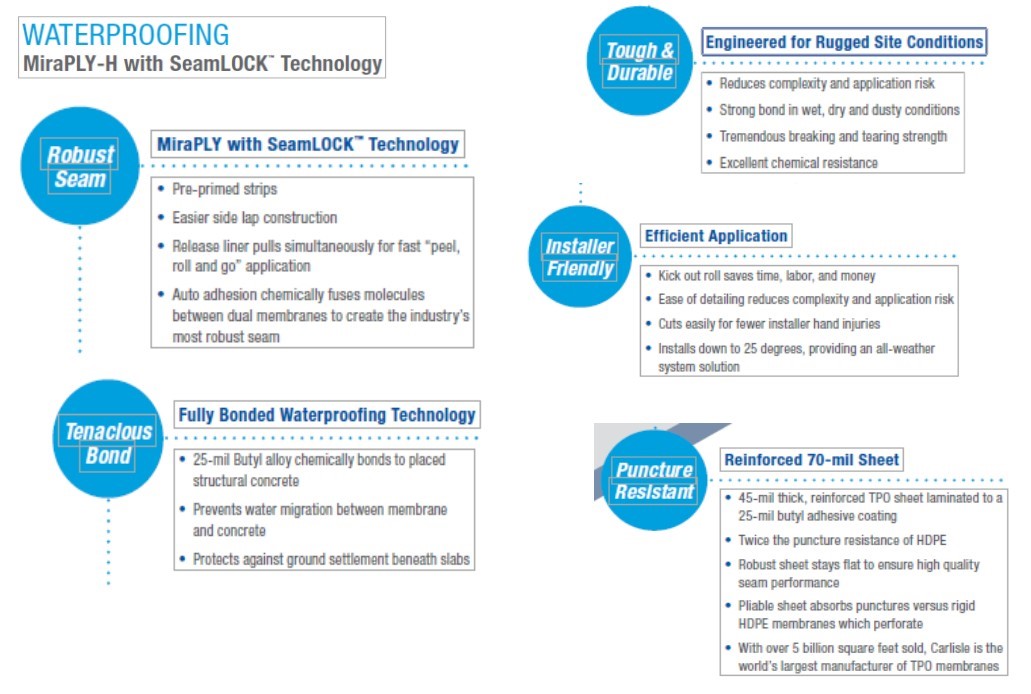Rain Screen wall systems are being specified more regularly because they help control moisture in exterior walls, reducing potential for water damage. Carlisle Coatings & Waterproofing has introduced CCW 705 RS – a robust, UV resistant engineered cladding designed for use as a blackout membrane behind open-joint rain screen claddings. CCW 705 RS also protects the insulation in a rain screen system from rain water and wind washing. 705 RS is mechanically attached and neighboring pieces are shingle lapped.
Features & Benefits:
- Imprint maintains black backdrop look, while facilitating product identification and proper installation. Imprint is not apparent once rain screen cladding is installed.
- Contributes to functionality and durability of rain screen wall assemblies.
- No weather restrictions for installation.
- Highly Vapor – Permeable, allowing underlying materials to dry through.
- Fire tested and can be used in many NFPA 285 wall assemblies.
If you have any questions about the benefits of CCW 705 RS or would like to set up a presentation/Lunch & Learn, please contact your Luna & Associates Representative.


